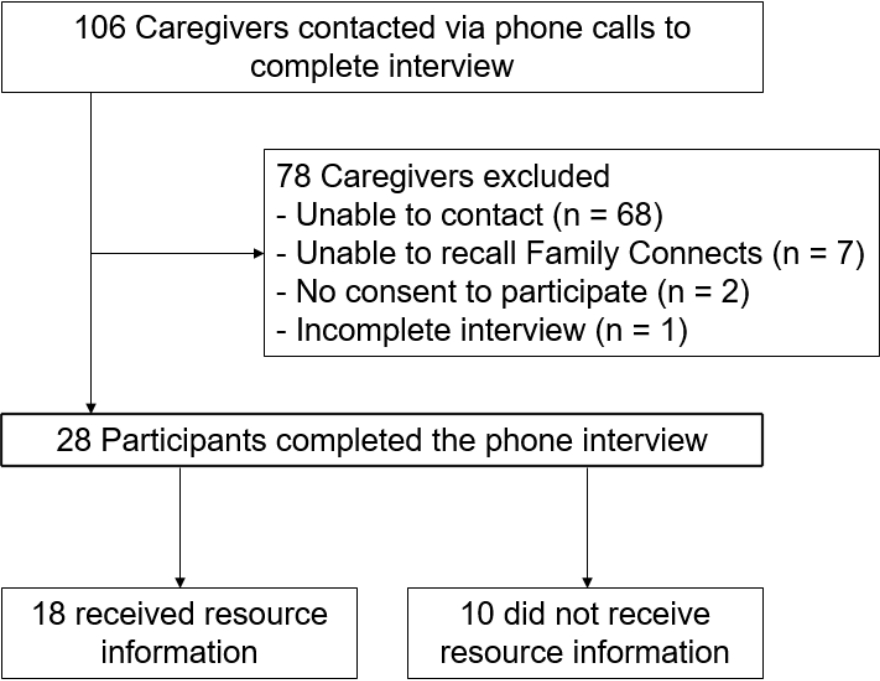Appendix 1
Interview Script
Introduction:
Thank you for taking the time to talk with me today. I am a research associate here at Children’s Hospital of Philadelphia. I’m working with a team of providers who are assessing the beliefs and attitudes about our Family Connects Program which aims to connect families with social services during the COVID-19 pandemic. Before I get started, I just wanted to remind you that this interview will take approximately 10-15 minutes. If you are not able to stay for the whole interview, please let me know now. Would you like to start the interview now?
If yes: Thank you for your time. I will now begin the audio recording.
HIT RECORD BUTTON
Participation is voluntary and confidential, and any answers you provide will have no effect on your child’s care. By agreeing to continue with the interview, you are providing your consent to participate. Your answers will be used to help us understand this topic better and make improvements to the process. I may also be writing down your responses. Do you consent to participating in this study?
Also, just to remind you, I’ll be audio-recording the conversation. When we type up the audio-recorded conversation, we will do our best to remove anything that could identify you on the recording. You can skip any question that you choose not to answer. Let me know if you don’t understand the question or would like me to better explain it. Also, just as a reminder, there are no right or wrong answers. We are only interested in learning about your opinion.
Do you have any questions?
“This is study ID#__. The date is ___.”
Do you remember speaking with someone about the Family Connects program while in the CHOP Ed during your visit on XXX? They would have called you on either your cell phone or the phone in the room to see if there was anything they could help you with while you were in the ED and we connected to x resource (only applicable if they received tangible resources).
Topic 1: Caregiver acceptability of FC program
First, we are going to discuss your overall feelings about this new program at CHOP. The Family Connects program was established to help link families to social resources during the COVID-19pandemic. Specifically, we are interested in how you feel about getting a cold call from someone at CHOP asking you about your social needs. Can you share with me your feelings about getting this phone call? How did this call affect you, if at all?
Positive response: Can you tell me more?
Negative response: Can you tell me more?
What characteristics should a person who makes these types of phone calls have to better serve families?
How do you think this new program should be changed after the pandemic is over?
What do you think about this program’s goal in helping families with social needs during COVID-19?
Topic 2: Connection to social services after discharge the emergency department
Now we’re going to discuss how well you were connected to the social services that were provided to you during your CHOP ED visit. Did you receive any resources from the Family Connects provider while in the CHOP ED on XX?
No–stop questioning
Yes or can’t remember–continue below
Branching-if they can’t remember, you will remind them
Probing questions:
• What resources did you say you needed, if any?
• Did the provider help you identify what you needed? If so, how?
• How did the provider obtain the resources you requested?
• What resources, if any, were unavailable to you?
How did you receive information about the resources suggested? Was the information given verbally or were you given a website to visit or was it printed?
Since your phone call with the Family Connects provider, what has your experience been with these resources?
How did you decide which to contact/use?
If NO resource was provided:
Prompts: Was the resource unavailable? Was the provider unable to find the appropriate resource for your needs? What additional programs would be useful to you?
Topic 3: Logistics of Family Connects Communication
The last thing I wanted to discuss with you today is how the Family connects team contacted you while in the CHOP ED on XXXX.
-You received a phone call. How did you feel about this method of contacting you?
Probing: What other methods would you have preferred? How else could we have contacted you?
-How would you feel about text messages
-How would you feel about in person communication, in the future when possible?
What changes could be made to further improve our program?
Is there anything else you’d like to discuss or emphasize for our interview about using the Family Connects program?
We’ll stop here and I’ll turn the audio-recorder off. Thank you for your time-your input has been really helpful.
STOP RECORD BUTTON




 PDF
PDF Citation
Citation Print
Print




 XML Download
XML Download